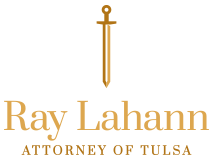It can be exhilarating for teenagers to join the Oklahoma workforce — either as permanent employees or temporary workers taking on summer jobs. At that age, many young workers think they are invincible, and it is up to their employers to teach them that they are as vulnerable as seasoned workers are. In fact, safety advisors say teens are twice as likely to suffer serious workplace injuries.
Sadly, hundreds of young workers lose their lives in fatal on-the-lob accidents every year. These incidents are typically preventable. Many business owners fail to provide adequate safety training, and teens are frequently tasked with operating dangerous equipment — often without proper supervision. Federal and state regulations prohibit the operation of certain kinds of machines by young workers, but these rules tend to be ignored in some workplaces.
The Occupational Safety and Health Administration says young workers must receive the same safety training as older workers do, and the establishment of mentors is recommended. However, teenage workers must be mentored by responsible senior workers who are known for compliance with safety regulations and equipped with the necessary skills to teach young workers to spot hazards and show them how to avoid dangerous situations. Teaching teenagers to work safely can benefit companies in the long run.
Employers who encourage young workers to ask questions about their jobs and safety procedures may find that few injuries occur. However, teen workers should know what to do when they are injured, including how the Oklahoma workers’ compensation insurance system works. Those who enter the job market in a facility that lacks proper safety protocols may find that benefits claims following workplace injuries may be disputed by employers. Fortunately, assistance is available from experienced workers’ compensation attorneys who can help those hurt in on-the-job accidents pursue financial coverage of medical expenses and lost wages.
Source: safetyandhealthmagazine.com, “Help keep young workers safe“, Accessed on July 22, 2017

